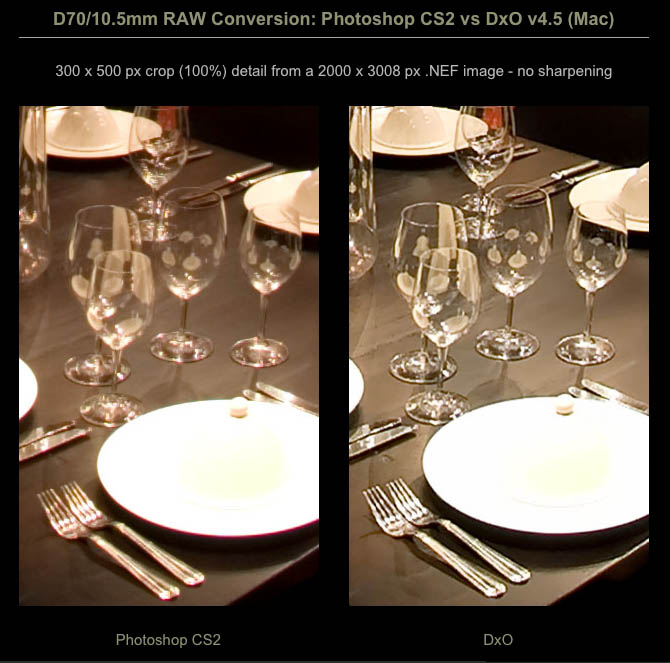
|
DxO and Image Stitching
Essay by Jim Scott with an introduction by Alain Briot
Other essays in this series
Introduction
Jim Scott creates stunningly beautiful stitched panoramas using DxO as his raw converter. Jim emailed me following the publication of my experience report on DxO 5. After seeing Jim's images, and after reading a description of his process, I decided to publish his essay here.
Jim's approach is very interesting in regards to DxO because it points to an often-overlooked feature in DxO: the deblur-lens softness control. De-blurring is often compared to sharpening. However, it is quite different in the sense that it removes image blur rather than add sharpening. Sharpening is often done by increasing the contrast along the edges of objects. Deblurring works differently by removing lens blur. Photoshop's closest feature to DxO Deblur function is Smart Sharpen which offers a deblur option.
Jim's images and experience make the point very well, I believe. So let's look at his work and read his description of his process.
Alain Briot
DxO and Image Stitching by Jim Scott
I create 360 interactive QTVRs using a D70 & Nikkor 10.5 - DxO makes such a difference in my workflow!!!
As a shooter of panoramas there are special demands in creating a pano, among them - to USM (USM=Unsharp Masking, a type of image sharpening) a pano to perfection (as you would do with print work or single on-line images) would invite disaster - the smooth rotation of the pano would be jerky (even with a powerful CPU) - not to mention a problematic increase in file size for web viewing. So you have to walk a middle line.
DxO nicely skirts this problem as will be seen in the image examples that follow...
How I do it:
To create my panos I take 6 images around (lateral 360 degrees); 1-up (zenith); 2 down (nadir) - all bracketed. The following has all been processed through DxO (but no USM)...
1-The full "unrolled" pano (8.25% of actual size) 360 x 180 degrees:
2-A Single image from the panorama (Nikkor 10.5mm DX full frame fisheye, 25% actual size):
3-Detail from the above "Single Image" (100%; actual size)... keep in mind this is coming from the near edge of a fisheye lens!
Also please notice that the above images are all derived from the same "master" image - this is what I mean by DxO's deburring "scalability". They look good (and halo free) at various resolutions.
If I had to do this pano using only USM it would have taken far longer - as I would have had to tweak different areas on an individual basis - for any needed output size. For this particular pano it would have been a nightmare.
Deblur-Lens softness
One of the main reasons I use DxO, and one of the main reasons behind the quality of my images is the "deblur/lens softness" feature of DxO. This feature really separates DxO from the crowd IMO and plays to its unique camera/lens combo analysis. This deblur is far more than an image sharpener as is evidenced by the incredible scalability of the deblur feature. Below is a straight translation comparison, without sharpening (but with DxO using deblur), between Photoshop CS2 and DxO... this is just the start of the image enhancement - which would you rather use?

What is the difference between a debur/Lens softness correction and the sharpening of an image? (My definition):
Deburring is similar to removing a thin film of oil off your lens - realizing the accutance potential of what your unique combination of camera/lens captures to the sensor, correcting for inherent flaws in your optics (just as was done for the Hubble telescope after its flawed mirror was sent into orbit).
While certain localized areas of an image can be USM'ed to match DxO's debur/lens softness feature, I have found this same USM setting applied in a global fashion will induce halos in other areas.
I do use USM (via Pixel Genius' "PhotoKit Sharpener") but only as a last touch in localized areas ("Depth of Field" brush mainly).
Unlike DxO's deblur, USM does not scale well - and hence the need to apply multiple USM routines (if you go with Pixel Genius' philosophy) at the "Capture", "Creative" and "Output" stages.
My usual routine is to apply mild sharpening in-camera - and then let DxO take over.
Jim Scott
May 2008
Essay and photographs Copyright © Jim Scott 2008. Introduction © Alain Briot 2008
All rights reserved worldwide
.
|
 |
|
|
|
|